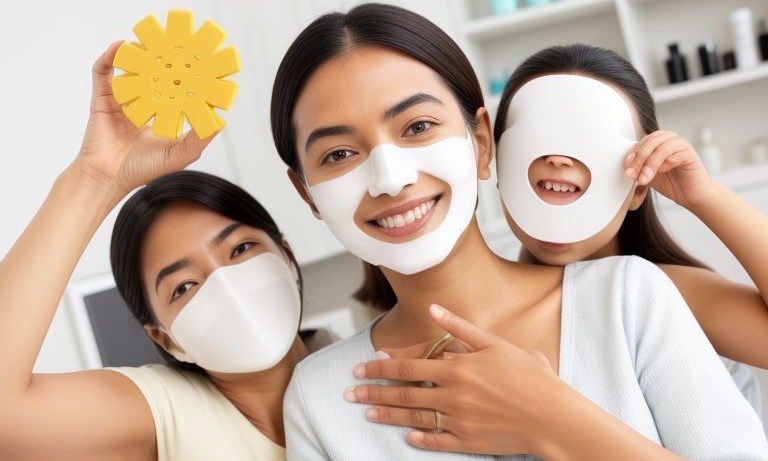In recent years, the skincare industry has witnessed a remarkable transformation, primarily driven by advancements in technology. From AI-powered skincare analysis to wearable devices and intelligent mirrors, these innovations are revolutionizing the way we approach and experience skincare.
AI-Powered Skincare Analysis
One of the most significant ways technology is transforming the skincare industry is through the use of artificial intelligence (AI) in skincare analysis. AI-powered tools can assess an individual’s skin type, concerns, and needs, providing personalized recommendations for products and routines.
How AI Skincare Analysis Works
AI skincare analysis typically involves the following steps:
- Image capture: Users take a high-resolution photo of their skin using a smartphone or other device.
- Analysis: The AI algorithm analyzes the image, identifying various skin characteristics, such as texture and tone, and the presence of specific concerns, like wrinkles, dark spots, or acne.
- Recommendation: Based on the analysis, the AI tool provides personalized product recommendations and skincare advice tailored to the user’s unique needs.
For example, the skincare brand Neutrogena has developed an AI-powered skin scanner called Skin360. Users attach the scanner to their smartphone and take a selfie, which the AI then analyzes to provide personalized skincare recommendations.
Benefits of AI Skincare Analysis
AI skincare analysis offers several benefits for consumers:
- Personalization: AI tools can provide highly targeted recommendations based on an individual’s specific skin needs, eliminating guesswork in product selection.
- Convenience: Users can access AI skincare analysis from the comfort of their own homes without the need for an in-person consultation with a dermatologist or skincare professional.
- Continuous monitoring: AI tools can track skin changes over time, allowing users to adjust their skincare routines as needed and monitor the effectiveness of their products.
Tip: When using an AI skincare analysis tool, be sure to take photos in consistent lighting conditions and without makeup for the most accurate results.
Wearable Skincare Devices
Another way technology is transforming skincare is through the development of wearable devices that can monitor skin health and deliver targeted treatments.
Types of Wearable Skincare Devices
There are several types of wearable skincare devices available on the market, including:
- UV sensors: These devices monitor sun exposure and alert users when it’s time to apply sunscreen or seek shade.
- Hydration monitors: These devices track skin moisture levels and remind users to drink water or apply a hydrating product when needed.
- LED light therapy masks: These devices use different wavelengths of light to target specific skin concerns, such as acne or fine lines.
Example: L’Oréal has developed a wearable UV sensor called My Skin Track UV, which monitors sun exposure and provides personalized sun safety recommendations via a smartphone app.
Benefits of Wearable Skincare Devices
Wearable skincare devices offer several benefits for users:
- Continuous monitoring: Wearable devices can track skin health in real time, providing valuable insights into how lifestyle factors like sun exposure and hydration impact the skin.
- Targeted treatments: Devices, like LED light therapy masks, allow users to address specific skin concerns in the comfort of their own homes without the need for expensive in-office treatments.
- Increased compliance: Wearable devices can remind users to perform essential skincare tasks, like applying sunscreen or drinking water, leading to better overall skin health.
Tip: When using a wearable skincare device, be sure to follow the manufacturer’s instructions carefully and start with the lowest intensity setting to avoid irritation.
Smart Mirrors
Smart mirrors are another technology innovation that is changing the way we approach skincare. These mirrors use advanced sensors and AI algorithms to analyze skin health and provide personalized recommendations.
How Smart Mirrors Work
Smart mirrors typically work as follows:
- Skin analysis: The mirror uses sensors to analyze the user’s skin, assessing factors like texture, tone, and the presence of specific concerns.
- Product recommendation: Based on the skin analysis, the mirror recommends products that are tailored to the user’s unique needs.
- Virtual try-on: Some smart mirrors also offer virtual try-on features, allowing users to see how different products will look on their skin before making a purchase.
Example: The HiMirror is a smart mirror that uses AI to analyze skin health and provide personalized skincare recommendations. It also offers a virtual “Beauty Box” feature, which allows users to track their skincare routines and monitor the effectiveness of their products over time.
Benefits of Smart Mirrors
Smart mirrors offer several benefits for skincare enthusiasts:
- Personalized recommendations: Smart mirrors can provide highly targeted product recommendations based on an individual’s unique skin needs, taking the guesswork out of skincare shopping.
- Virtual try-on: Some smart mirrors offer virtual try-on features that allow users to experiment with different products and shades without physically applying them to their skin.
- Progress tracking: Smart mirrors can help users track the effectiveness of their skincare routines over time, providing valuable insights into what’s working and what’s not.
Tip: When using a smart mirror, be sure to position your face consistently and at a consistent distance from the mirror to ensure accurate skin analysis.
3D Printing in Skincare
3D printing is another technology innovation that is starting to make waves in the skincare industry. This technology allows for the creation of highly customized skincare products that are tailored to an individual’s unique needs.
How 3D Printing Works in Skincare
3D printing in skincare typically involves the following steps:
- Skin analysis: A skincare professional or AI tool assesses the individual’s skin type, concerns, and needs.
- Formulation: Based on the skin analysis, a custom skincare formula is developed, taking into account the individual’s specific requirements.
- Printing: The custom formula is then 3D printed into a skincare product, such as a face mask or serum.
Example: Skincare brand Neutrogena has partnered with tech company FitSkin to develop a 3D-printed face mask called MaskiD. Users take a selfie using the MaskiD app, which analyzes their skin and creates a custom face mask that is tailored to their unique needs.
Benefits of 3D Printing in Skincare
3D printing offers several benefits for skincare consumers:
- Customization: 3D printing enables the production of personalized skincare products designed to meet the unique requirements of an individual.
- Precision: 3D printing enables the precise delivery of active ingredients to specific areas of the face, allowing for more targeted treatments.
- Sustainability: 3D printing can reduce waste in the skincare industry by allowing for the production of smaller batches of products based on individual demand.
Tip: When using a 3D-printed skincare product, be sure to follow the instructions carefully and start with a small test patch to ensure your skin does not react negatively to the custom formula.
Future of Technology in Skincare
Some potential future developments include:
- Augmented reality (AR) skincare consultations: AR technology could allow users to virtually “try on” different skincare products and see how they would look and feel on their skin.
- Microbiome testing: Advancements in genetic testing allow for the analysis of an individual’s skin microbiome, providing insights into the specific bacteria and fungi that live on their skin and how these microorganisms impact skin health.
- Personalized skincare supplements: As our understanding of the connection between diet and skin health grows, we may see the development of customized skincare supplements that are tailored to an individual’s unique nutritional needs.
Example: Skincare brand Atolla uses a combination of at-home skin testing and AI analysis to create personalized skincare serums that are tailored to each user’s unique needs. As technology continues to evolve, we can expect to see even more brands offering this level of customization.
Conclusion
Technology is transforming the skincare industry in countless ways, from AI-powered skin analysis to wearable devices and 3D-printed products. These innovations are making it easier than ever for individuals to achieve their best skin with personalized recommendations and targeted treatments that are tailored to their unique needs.
As we look to the future, we can expect to see even more exciting developments in the world of skincare technology. From AR consultations to personalized supplements, the possibilities are endless.
However, it’s important to remember that technology is not a replacement for a good skincare routine and healthy lifestyle habits. While these innovations can undoubtedly help us achieve our skincare goals, they should be used in conjunction with a consistent routine that includes cleansing, moisturizing, sun protection, and a balanced diet.
By staying informed about the latest skincare technologies and incorporating them into our routines as appropriate, we can harness the power of innovation to achieve healthy, glowing skin that looks and feels its best.

